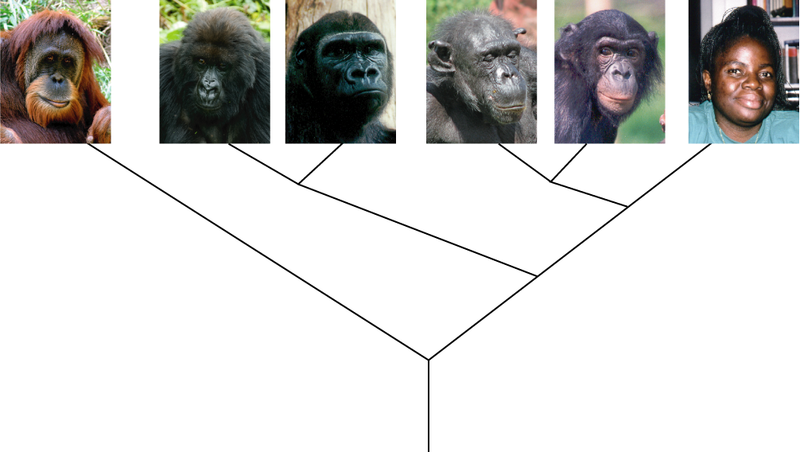
How closely are gorillas related to us?
In former times, the human species used to be put into its own taxonomic family (Hominidae), while the great apes were put in a different family, Pongidae. This division was based on certain anatomical specialisations, mainly the highly developed human brain and the unique locomotion. More recently, most experts have concluded that this view is out of date. According to their research, the chimpanzees are the closest relatives of humans; the next in line are the gorillas. The orang-utans are only remotely related to the other species.
The genetic material of apes is identical to that of humans to a very large degree. Differences are especially small in the nuclear DNA. Certain genes that were analyzed differ by only 1.2% between humans and chimpanzees, by 1.6% between humans and gorillas and by 1.8% between gorillas and chimpanzees. In contrast, analyzed parts of the genetic material of African apes and humans differ from the respective genetic material of the orang-utan by about 3.1%. In mitochondrial DNA, which changes considerably faster, geneticists found a difference in 8.8% between humans and chimpanzees, 10.3% between humans and gorillas, 10.6% between chimpanzees and gorillas and 16-17% difference between the other species and the orang-utan.
Although chimpanzees and bonobos are the closest relatives of humans, gorillas resemble us more in some respects. For instance, the gorillas' hands and feet resemble the human ones more than those of other apes. Gorillas spend more time on the ground than other apes, therefore their feet are more suited to walking. This is especially true for the mountain gorillas.
